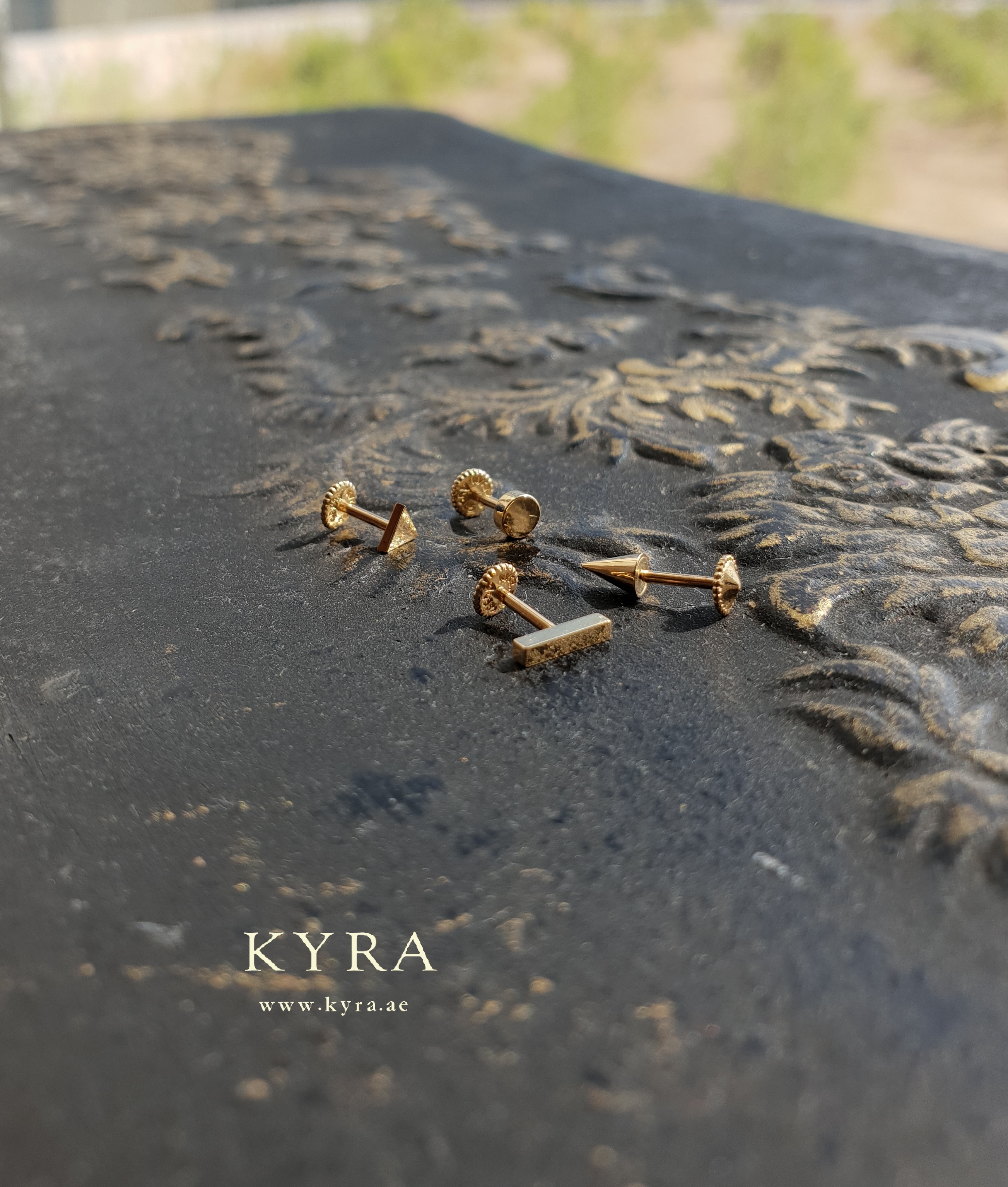The Complete Guide to Industrial Piercings: Expert Tips for AfterCare, Healing & Jewelry Selection"
Posted by KYRA on 11th May 2025

The Complete Guide to Industrial Piercings: Expert Tips for AfterCare, Healing & Jewelry Selection"
Are you considering taking your ear piercing game to the next level? The industrial piercing might be exactly what you're looking for. This distinctive modification has become increasingly popular among piercing enthusiasts for its edgy aesthetic and customization potential.
What Is an Industrial Piercing?
An industrial piercing (sometimes called a scaffold piercing) consists of two holes connected by a single straight barbell. The traditional industrial piercing connects the forward helix (upper cartilage) with the helix rim, creating a diagonal bar across the ear.
This piercing stands out from standard lobe or cartilage piercings because it:
- Creates a dramatic visual statement across the ear
- Allows for unique jewelry options and customization
- Requires specific ear anatomy to accommodate correctly
- Makes a bold fashion statement even with minimal other accessories

The Industrial Piercing Process
Preparation and Planning
Before getting an industrial piercing, an associate piercer at KYRA will:
- Evaluate your ear anatomy to determine if it's suitable
- Discuss placement options based on your ear structure
- Help you select appropriate initial jewelry from KYRA's extensive collection.
- Ensure you understand aftercare requirements
The Procedure
The industrial piercing process typically involves:
- Thorough cleaning and marking of your ear
- Creation of two separate cartilage piercings
- Insertion of a single barbell through both holes
- Initial jewelry placement (usually a longer barbell to accommodate swelling)
The process takes about 15-30 minutes and is performed with a hollow needle rather than a piercing gun to minimize trauma to the cartilage.
Recovery and Aftercare
Industrial piercings require dedicated aftercare as they heal. Key points include:
Healing Timeline
Industrial piercings typically take 6-12 months to fully heal due to their location in cartilage tissue, which receives less blood flow than fleshier areas.
Daily Care
- Clean 2-3 times daily with sterile saline solution
- Avoid sleeping on the piercing side
- Don't twist, turn, or remove the jewelry during healing
- Keep hair products, makeup, and lotions away from the area
Warning Signs
- Excessive swelling, redness, or heat
- Yellow or green discharge
- Severe pain or throbbing
- Jewelry embedding into the skin
Popular Industrial Piercing Jewelry Styles
Once healed, you can experiment with various jewelry options:
- Straight Industrial Barbells: The classic option with various end pieces
- Curved Industrial Jewelry: Creates a gentler arch across the ear
- Custom Industrial Designs: Featuring chains, charms, or geometric shapes
- Anodized Titanium Options: Available in various colors to match your style
Is an Industrial Piercing Right for You?
Consider these factors before getting an industrial piercing:
- Anatomy: Not everyone's ear structure can accommodate this piercing
- Commitment: The extended healing time requires dedicated aftercare
- Lifestyle: Consider your work environment, athletic activities, and sleeping habits
- Pain Tolerance: Industrial piercings typically hurt more than lobe piercings
Finding a Qualified Piercer
The success of your industrial piercing largely depends on who performs it. at KYRA:
- Our Professional piercers have specific cartilage experience
- Over two decades of previous industrial piercings
- Clean, sterile facilities with proper equipment
Conclusion
Industrial piercings offer a distinctive way to express your personal style through body modification. While they require more commitment than standard ear piercings, many enthusiasts find the unique aesthetic well worth the investment in proper care and healing time.
If you're considering this bold ear statement, call / visit us , understand the aftercare requirements, and make sure your ear anatomy is suitable for this striking modification. With proper care and patience, your industrial piercing can become a signature part of your personal style for years to come.
FAQs About Industrial Piercings
Q: Can I get an industrial piercing if I've never had cartilage piercings before? A: Yes, though it's recommended to have experience with simpler piercings first to understand your healing process.
Q: How painful is an industrial piercing compared to other ear piercings? A: Industrial piercings typically rank higher on the pain scale than lobe piercings but are comparable to other cartilage modifications. The second hole often hurts more than the first.
Q: What should i avoid with a new industrial piercing? A: It's best to avoid earbuds/ headphones during the healing process as they can introduce bacteria and cause pressure or irritation.
Q: What materials are best for initial industrial jewelry? A: Implant-grade titanium is the gold standard for initial jewelry due to its biocompatibility and lower risk of irritation.
Q: What if my ear isn't suitable for a traditional industrial? A: Professional piercers at KYRA will often suggest custom industrial variations or alternative piercing combinations that work with your unique anatomy. Book an Appointment .



